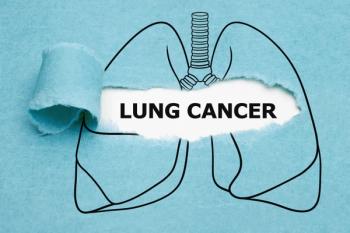
ACS Cancer Statistics Report Shows Record Drop in Cancer Mortality, But Persistent Disparities
The 2021 American Cancer Society annual Cancer Statistics report found that the overall rate of cancer mortality continuously declined from 1991 to 2018 but also highlighted racial and geographic disparities.
The 2021 American Cancer Society (ACS) annual
The report estimates the numbers of new cancer cases and deaths in the United States each year based on the most recent data from the Surveillance, Epidemiology, and End Results Program; National Program of Cancer Registries; and North American Association of Central Cancer Registries. For the 2021 report, incidence data ran through 2017 and mortality data through 2018.
Cancer rates increased for most of the 20th century, hitting a peak in 1991 and continually falling since then due to reductions in smoking, advances in early cancer detection, and more effective treatments. A total decline of 31% since the 1991 peak means about 3.2 million fewer cancer-related deaths than if the peak rates had continued
In lung cancer, which is the deadliest cancer type worldwide, the mortality rate continued to decline at an accelerated rate from 2014 to 2018. Nearly half of the overall decline in mortality in those years was due to the drop in lung cancer deaths, which the authors attribute to both a steady decline in lung cancer incidence and increased survival in non-small cell lung cancer (NSCLC) patients. NSCLC survival increased from 34% in those diagnosed in 2009-2010 to 42% in 2015-2016 due to improved treatment options, the authors wrote.
Despite slower progress in the 3 other leading cancers—colorectal, breast, and prostate—improved treatment and the subsequent accelerated progress in lung cancer resulted in a record drop in overall cancer mortality.
Based on the trends seen in those data, the authors project 1,898,160 new cancer cases and 608,570 cancer deaths in 2021. The authors note that the fallout from the coronavirus disease 2019 (COVID-19) pandemic remains to be seen, but initial studies have suggested that the delays in care early on in the pandemic will lead to higher rates of more advanced cancers and ultimately
“The impact of COVID-19 on cancer diagnoses and outcomes at the population level will be unknown for several years because of the time necessary for data collection, compilation, quality control, and dissemination,” lead author Rebecca Siegel, MPH, said in a
Another alarming trend highlighted in the 2021 ACS Cancer Statistics report is the persistence of racial, socioeconomic, and geographic disparities in cancers that are highly preventable, such as cervical or lung cancer.
The Black-White disparity in overall cancer mortality has declined from a peak of 33% in 1993 to 13% in 2018, but survival rates are still lower in Black patients compared with White patients across cancer types, with the exception of pancreas. Cancers that are the most preventable, like lung cancer, cervical cancer, and melanoma, had the largest geographic variations. In states where smoking prevalence is the highest, for example, lung cancer mortality varied from 3 to 5 times the rate in states with the lowest smoking prevalence.
“While recent advances in treatment for lung cancer and several other cancers are reason to celebrate, it is concerning to see the persistent racial, socioeconomic, and geographic disparities for highly preventable cancers,” William G. Cance, MD, chief medical and scientific officer at the ACS. “There is a continued need for increased investment in equitable cancer control interventions and clinical research to create more advanced treatment options to help accelerate progress in the fight against cancer.”
References
1. Siegel RL, Miller KD, Fuchs HE, Jemal A. Cancer Statistics, 2021. CA Cancer J Clin. Published online January 12, 2020. doi:10.3322/caac.21654
2. McNulty R. Cancer Care Delays in COVID-19 Could Lead to Higher Morbidity, Mortality. Am J Manag Care. Published online October 22, 2020. Accessed January 13, 2021. https://www.ajmc.com/view/cancer-care-delays-in-covid-19-could-lead-to-higher-morbidity-mortality
3. Record Drop in Cancer Mortality For Second Straight Year Due to Improved Lung Cancer Treatment; COVID-19 Impact Still Unknown. News release. American Cancer Society; January 12, 2021. Accessed January 13, 2021.
Newsletter
Stay ahead of policy, cost, and value—subscribe to AJMC for expert insights at the intersection of clinical care and health economics.





























































